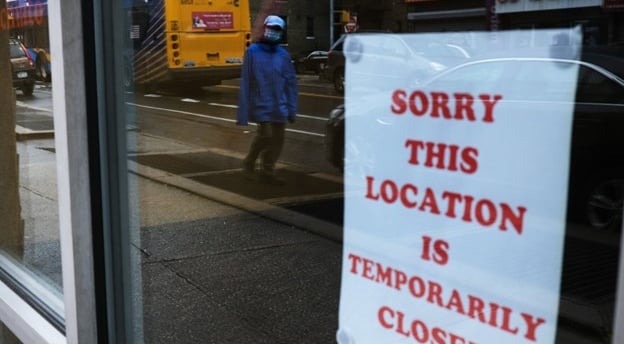Business Building Back Stronger: FEMA's SBP and HUD Section 3 Program.
Henry Comas
1/12/20243 min read


In the face of unprecedented challenges like hurricanes, floods, and even global pandemics, small business owners across the nation find themselves struggling to keep their doors open. These catastrophes have dealt a harsh blow to local businesses, leaving them in desperate need of assistance. In this article, we are going to talk about two impressive programs that can help small business owners recover from disasters, FEMA's Small Business Program (SBP) and HUD's Section 3 Program and explore how they can assist businesses to weather the storm.
FEMA Small Business Program: The Small Business Program (SBP) offered by FEMA is a vital resource for business owners who wish to rebuild their businesses following adversity. The goal of this initiative is to maximize participation opportunities for small firms by assisting them in obtaining federal contracts. The government works to make sure small businesses get at least 23% of all federal contracting dollars. It primarily targets small businesses affected by disasters, including those impacted by natural disasters, emergencies, or other incidents eligible for FEMA assistance. Under the SBP, small business owners can access low-interest loans to cover expenses such as property damage repair, inventory replacement, or even operating costs during temporary closures. This financial lifeline aims to help entrepreneurs get back on their feet swiftly, ensuring continuity of their operations and preventing further losses. Here is what you need to know about FEMA's SBP:
SBA Mentor-Protégé Program: This program pairs experienced businesses with smaller ones, providing invaluable guidance, support, and valuable networking opportunities. Mentors can share their knowledge and expertise with protégé businesses, helping them navigate the complexities of federal procurements.
Subcontracting Opportunities: FEMA actively seeks to engage small businesses as subcontractors, recognizing their importance and contribution to larger projects who can gain valuable experience, exposure, and establish relationships with prime contractors.
FEMA's Industry Liaison Program: This program allows small firms to establish direct communication with FEMA's procurement staff, fostering partnerships and providing updates on forthcoming possibilities. Small firms can then customize their offers and be prepared for future contracts.
System for Award Management: Small businesses can benefit from registering in System for Award Management (SAM). It facilitates their registration, profile maintenance, and continued visibility to agencies and contractors. By using SAM, small businesses increase their chances of for federal contracts.
HUD Section 3 Program: Now let us talk about HUD's Section 3 Program. This program is another lifeline for small businesses affected by disasters. It concentrates employment and economic opportunities created by specific HUD funding (HOME, CDBG-DR, and MIT) directed toward low- and very low-income individuals, especially those who receive housing assistance from the government, and to businesses that offer low- and very low-income individuals’ economic opportunities. By participating in the Section 3 Program, small business owners gain access to HUD-funded contracts and subcontracts, which can help offset losses incurred during disasters. Here is what you need to know:
Contracting and Business Registry: The program encourages small businesses to register in the HUD Section 3 Business Registry. This boosts their visibility to contractors looking for Section 3-compliant firms. Business and individuals that who self-register opens doors to contracting opportunities and collaborations with larger organizations, giving small businesses more reach and impact.
Encourages Training and Employment Opportunities: Requiring contractors and subcontractors working on HUD-funded projects to provide job training and employment opportunities for Section 3 residents and for low-income individuals. Emphasizing the development of local businesses and workforce through project-based initiatives. Section 3 Program helps low-income people find work. It is mandatory for contractors and subcontractors involved in HUD-funded projects to offer employment opportunities.
In contrasting the two initiatives, HUD's Section 3 Program adopts a more comprehensive strategy for economic recovery, while FEMA's SBP focuses primarily on financial assistance and counseling for disaster-stricken businesses, impacted by disasters. Utilizing both programs may help you get the most out of your recovery, depending on your circumstances.
In conclusion, the HUD Section 3 Program and FEMA's Small Business Program serve distinct purposes and target different beneficiaries. Through initiatives supported by HUD, the Section 3 Program aims to increase employment and economic prospects for low-income people and companies. However, FEMA's Small Business Program is meant to help all small businesses. It is essential to comprehend the goals, requirements, and characteristics of these programs before requesting assistance. Both HUD's Section 3 Program and FEMA's Small Business Program are vital lifelines for small business owners confronting the difficult obstacles brought on by disasters. The Small Business Program makes sure that company owners have the help they need to recover by providing financial aid and counseling designed especially for disaster recovery. In the meantime, a wider range of job and contracting opportunities offered by the Section 3 Program, which promotes community development and corporate growth.
Please visit the following websites to find out more about the HUD Section 3 Program and the FEMA Small Business Program: https://www.hud.gov/section3 and https://www.fema.gov/business-industry/doing-business/small-business.
